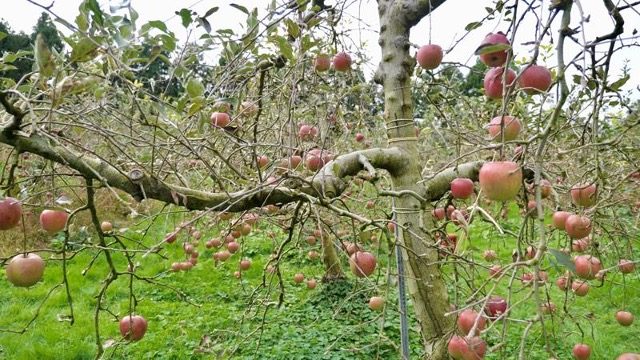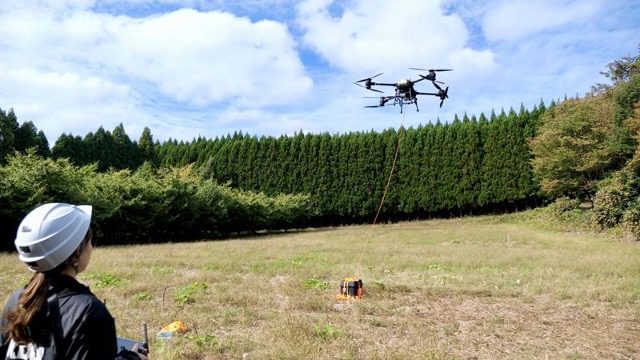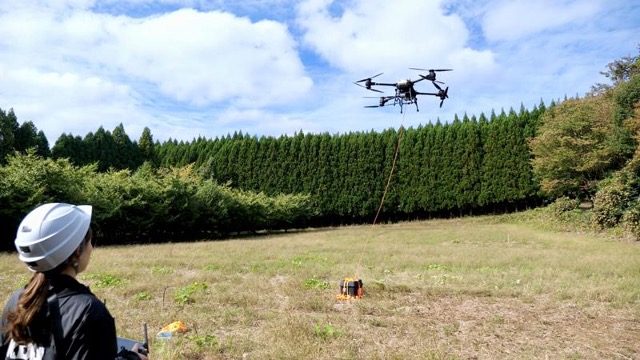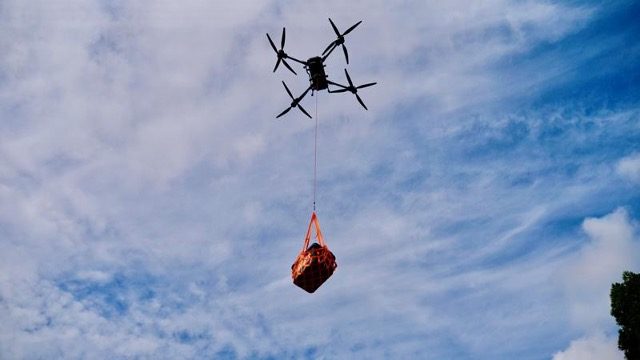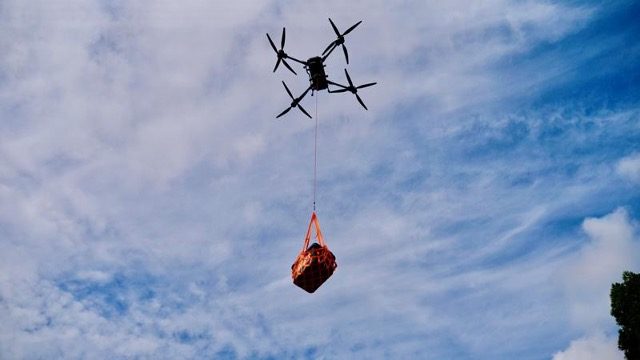Drone Technology Saves the Day: Rescuing a Rural Apple Harvest in Japan
KDDI and DJI Flycart 30 Prove Vital in Overcoming Logistics Challenges After Heavy Rains in Ishikawa Prefecture

by DRONELIFE Staff Writer Ian J. McNabb
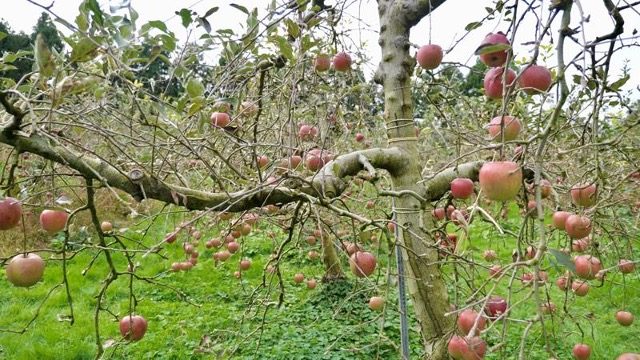
The harvest season for the local “Shuhei” apples is in October, but with the roads closed, KDDI drone operators, working via a partnership with Ishikawa authorities, had to use cargo drones to carry the harvest 1.2 km, reducing a 40 minute journey by foot (carrying heavy bags of apples) to a 2 minute trip. In total, around 880 lbs (400 kg) of apples were transported in 20 trips over 2 days, each trip bringing around 40 kg of apples.
Tanbo Orchard’s Tanbo Masahiro said, “Due to landslides and collapsed roads, it was impossible to get to the orchard by car, so we consulted with Ishikawa Prefecture and learned about this new method of transport by drone, and decided to give it a try. Loading apples onto a drone takes longer than by car, but once we got the hang of it, it went smoothly. It meant that the harvested apples did not go to waste, and we felt that it would be extremely useful in times of disaster like this. Once the roads are repaired, we would like to try using drones to transport the apples we plan to ship from now on.”
The project used a DJI Flycart 30, which features a coaxial four-axis, eight-blade, multi-rotor configuration with carbon fiber propellers, a 20 m/s maximum flight speed, and a dual-battery configuration for carrying a 30 kg payload over 16 km. The unit also features IP55 protection, is capable in temperatures from -20° to 45° C, and winds up to 12 m/s. The whole system is optimized for altitudes from 0-6,000 m and support flight up to 3,000 m with a 30 kg payload, and features self-heating batteries for optimal performance in low temperatures.
Want DRONELIFE news delivered to your inbox every weekday? Sign up here.


